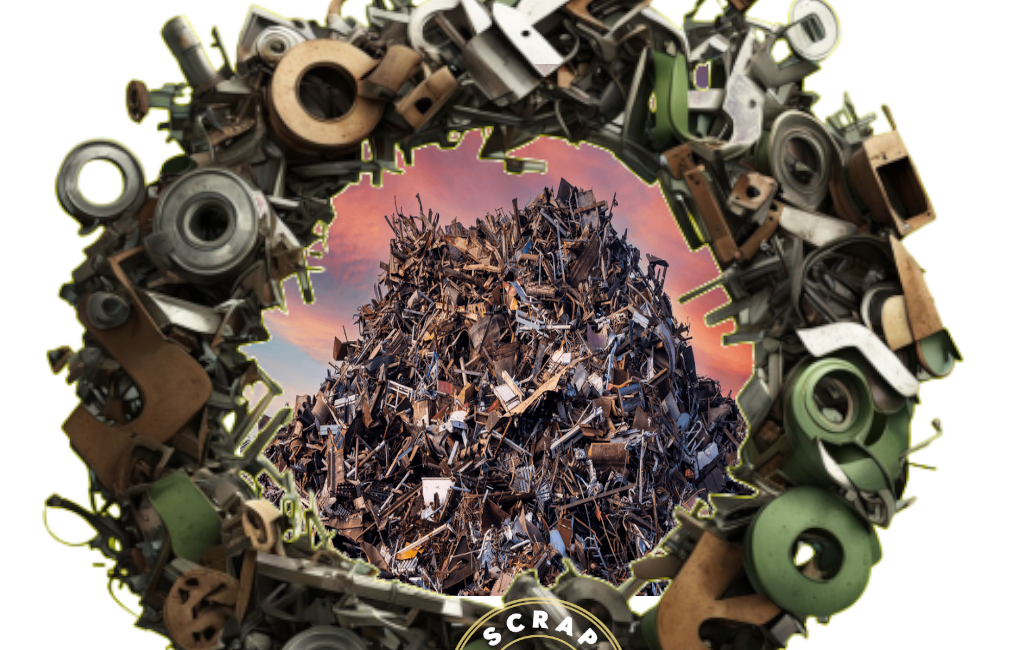Steel Scrap: An Essential Component of Sustainable Industry
Understanding Steel Scrap
What is Steel Scrap?
Steel scrap refers to discarded steel that can be recycled and reused. It includes leftover materials from construction, manufacturing, old machinery, vehicles, and consumer products. It is categorized into two main types:
- Ferrous scrap: Contains iron and is magnetic.
- Non-ferrous scrap: Does not contain iron and is non-magnetic.
Types of Steel Scrap
- Obsolete scrap: Sourced from discarded products like appliances, vehicles, and structures.
- Prompt scrap: Generated during manufacturing processes.
- Home scrap: Produced and reused within steel production facilities.
The Importance of Steel Scrap
Sustainability
Recycling steel scrap reduces the need for raw material extraction, conserving natural resources and minimizing environmental degradation.
Economic Impact
The steel recycling industry creates jobs and drives economic growth. It supports ancillary industries such as transportation, sorting facilities, and scrap processing plants.
Global Demand
Steel is integral to industries like construction, automotive, and shipbuilding. Using recycled steel fulfills this demand while reducing costs and environmental impact.
The Collection and Sorting Process
Collection
Steel scrap is collected from various sources:
- Residential: Old appliances, cans, and consumer goods.
- Industrial: Factory waste, construction debris, and decommissioned infrastructure.
- Automotive: End-of-life vehicles (ELVs) and spare parts.
Sorting
Sorting is essential to separate steel from other materials. Technologies like magnetic separators and eddy current systems are used to streamline this process.
Transportation
Once sorted, steel scrap is transported to recycling facilities for further processing.
The Steel Recycling Process
Step 1: Shredding and Melting
Scrap steel is shredded into smaller pieces and melted in electric arc furnaces (EAFs), which consume less energy than traditional blast furnaces.
Step 2: Purification
Impurities are removed to ensure the steel meets quality standards. This may involve chemical treatments and advanced filtration methods.
Step 3: Solidification
Molten steel is solidified into billets, ingots, or sheets, which can be used for manufacturing new products.
Step 4: Redistribution
The recycled steel is distributed to industries for use in construction, automotive manufacturing, packaging, and more.
Economic Benefits of Steel Scrap Recycling
Cost Savings
Recycling steel is more cost-effective than producing new steel from raw materials. The reduced energy and resource requirements significantly lower production costs.
Job Creation
The steel scrap industry supports millions of jobs globally, from collection and transportation to recycling and manufacturing.
Revenue Generation
Selling scrap steel provides a revenue stream for industries and individuals, boosting economic activity.
Environmental Benefits of Recycling Steel Scrap
Energy Efficiency
Recycling steel saves up to 74% of the energy required to produce new steel from raw materials.
Reduction in Greenhouse Gas Emissions
The recycling process emits fewer greenhouse gases compared to traditional steel production, aiding in the fight against climate change.
Conservation of Natural Resources
Using scrap steel reduces the need for mining iron ore, preserving natural habitats and biodiversity.
Waste Management
Recycling minimizes the volume of steel waste in landfills, addressing waste management challenges.
Challenges in Steel Scrap Recycling
Quality Control
Ensuring the purity of recycled steel can be difficult, as contamination affects the final product’s quality.
Transportation Costs
Moving large volumes of scrap steel is expensive and requires logistical efficiency.
Market Volatility
Steel scrap prices fluctuate due to demand, global trade policies, and raw material costs, impacting profitability.
Technological Limitations
Not all recycling facilities have access to advanced technology for efficient processing and purification.
Global Perspectives on Steel Scrap
Top Producers and Consumers
Countries like China, the United States, and India dominate steel production and recycling. These nations have robust infrastructure to handle large volumes of scrap steel.
Trade Policies
International trade in steel scrap is influenced by tariffs, regulations, and environmental policies, affecting supply chains and prices.
Sustainability Goals
Governments worldwide are incorporating steel scrap recycling into their strategies to achieve sustainability targets.
Innovations in Steel Scrap Recycling
AI and Automation
Artificial intelligence and robotics enhance sorting precision, reducing contamination and improving efficiency.
Advanced Melting Technologies
Induction furnaces and plasma arc melting minimize energy consumption during recycling.
Circular Economy Initiatives
Industries are adopting circular economy models, focusing on maximizing resource efficiency and minimizing waste.
The Future of Steel Scrap
Increasing Demand
As industries prioritize sustainability, the demand for recycled steel is expected to grow.
Policy Support
Governments are introducing incentives and regulations to promote steel scrap recycling.
Technological Advancements
Emerging technologies will make recycling more efficient, further reducing costs and environmental impact.
Global Collaboration
International cooperation will streamline the steel scrap trade, addressing challenges like market volatility and resource scarcity.
Conclusion
Steel scrap is an indispensable resource in modern industry, offering economic, environmental, and social benefits. Its recycling supports sustainability, reduces costs, and fulfills the growing demand for steel in various sectors. While challenges persist, innovations and policy support pave the way for a thriving steel scrap industry. By embracing recycling practices, industries and individuals contribute to a sustainable future, demonstrating the power of steel scrap as a cornerstone of circular economies.

Leave a Comment